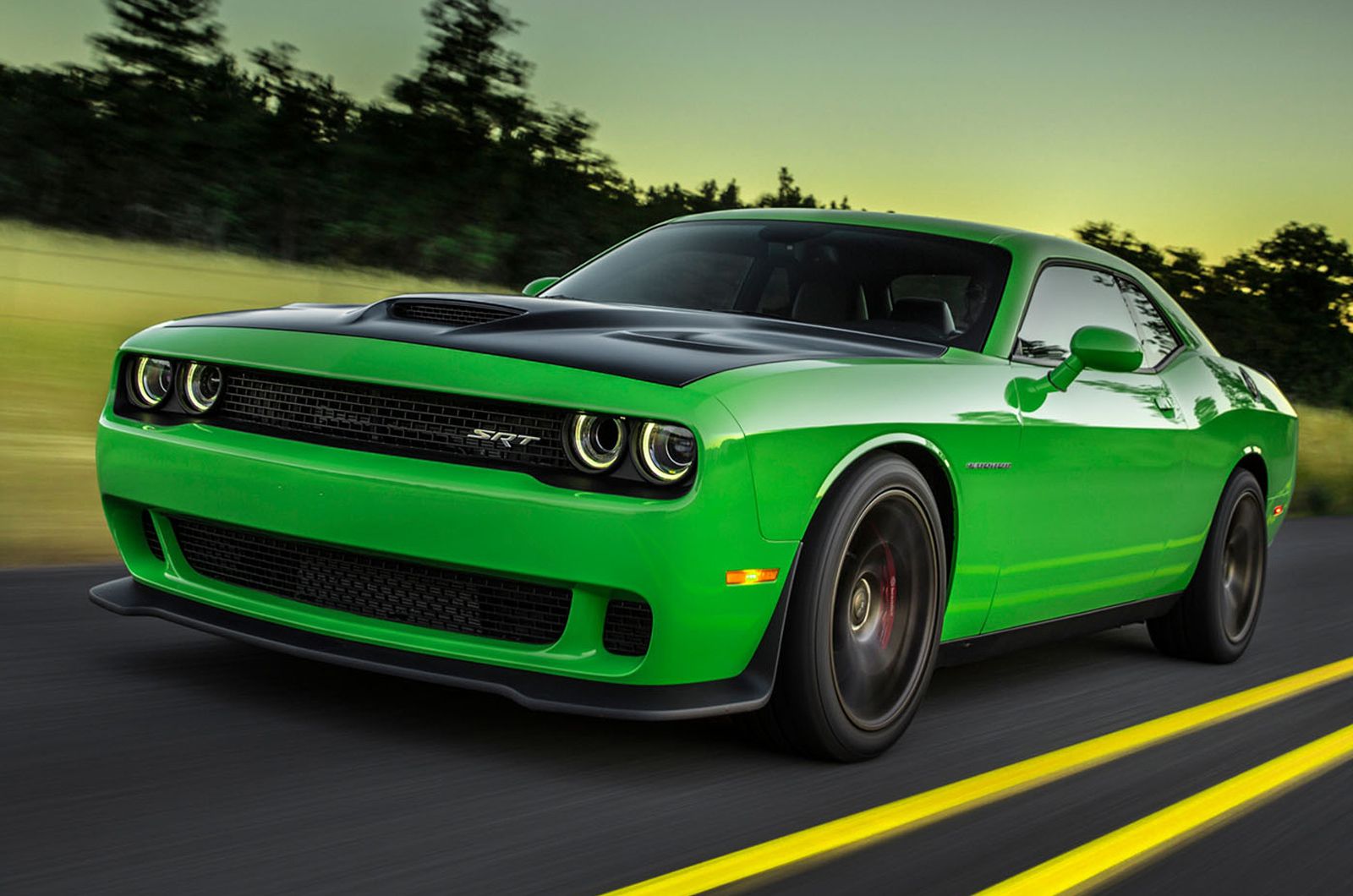
Ever get that nagging feeling that something amazing is missing from your life? For car enthusiasts, that feeling often kicks in when we scroll through endless lists of new electric crossovers and wonder, “Where’s the soul?” Some cars get pulled from production but never truly leave our minds. They hold a special place in automotive culture long after their final assembly line run, whether it’s for their audacious design, thrilling performance, or simply the iconic moment in time they represent. These machines captured something truly unique—an idea, a feeling, or a fiercely loyal following that just refuses to fade away.
In today’s automotive landscape, where electric platforms are king and streamlined crossovers dominate the roads, the yearning for character and pure, unadulterated nostalgia has only grown stronger. Automakers often peek into the past for inspiration, and let’s be real, the demand for epic comebacks is louder than a V8 at full throttle! We’ve seen models like the Acura NSX and Toyota Supra make glorious returns, which only makes us wonder: why can’t these other legends get a second shot?
So, prepare for a journey down memory lane as we highlight eighteen cars that undeniably left their mark and, frankly, still have some unfinished business. Each one on our list boasts the legacy, personality, or fan support to absolutely earn a second life on the road. And yes, we’re not above begging for it – because some cars are just too good to be gone. Here are the first seven that we’re wishing for, like, yesterday!
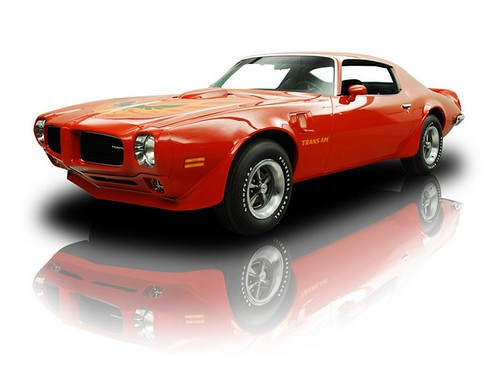
1. **Pontiac Firebird Trans Am**Oh, the Pontiac Firebird Trans Am! This car isn’t just a vehicle; it’s a bonafide icon of American performance and pop culture, etched into the collective memory of generations. Its aggressive styling and unmistakable presence made it an absolute favorite during the roaring height of the muscle car era, defining what it meant to be cool and powerful on four wheels. From movies to music videos, the Trans Am commanded attention and embodied a rebellious spirit that few cars could match.
Even with Pontiac’s unfortunate closure, the Firebird’s spirit lives on, thanks to a dedicated army of enthusiasts. They’ve kept the name alive through thriving clubs, painstaking restoration builds that bring these beauties back to their former glory, and even impressive replicas that ensure its visual legacy continues. The interest in the Firebird remains incredibly strong, bridging generations of car lovers who appreciate its unique blend of flair and brute force.
Imagine a modern Firebird Trans Am roaring back onto the scene. A well-executed return could perfectly blend that cherished nostalgia with today’s muscle appeal, giving us a car that respects its heritage while delivering modern performance. It’s a comeback story waiting to happen, ready to reignite the passion for American muscle with a fresh, contemporary edge. We can practically hear the T-tops popping off already!
Car Model Information: 2025 Audi Q7 55 Premium Plus
Name: Pontiac Firebird
Caption: The second, third, and fourth generations of,the Pontiac Firebird Trans Am
Manufacturer: Pontiac (automobile)
Production: February 23, 1967 – August 30, 2002
ModelYears: 1967 – 2002
Class: Pony car,Muscle car
Platform: GM F platform
Related: Chevrolet Camaro
Layout: Front engine, rear-wheel-drive layout
Categories: 1970s cars, 1980s cars, 1990s cars, 2000s cars, All articles with dead external links
Summary: The Pontiac Firebird is an American automobile built and produced by Pontiac from the 1967 to 2002 model years. Designed as a pony car to compete with the Ford Mustang, it was introduced on February 23, 1967, five months after GM’s Chevrolet division’s platform-sharing Camaro. This also coincided with the release of the 1967 Mercury Cougar, Ford’s upscale, platform-sharing version of the Mustang.
The name “Firebird” was also previously used by GM for the General Motors Firebird series of concept cars in the 1950s.
Get more information about: Pontiac Firebird
Buying a high-performing used car >>>
Brand: Pontiac Model: Firebird Trans Am
Price: $55,675 Mileage: 20,490 mi.
Read more about: Gearhead God: A High-Octane Tour Through John Cena’s Legendary American Muscle Car Empire
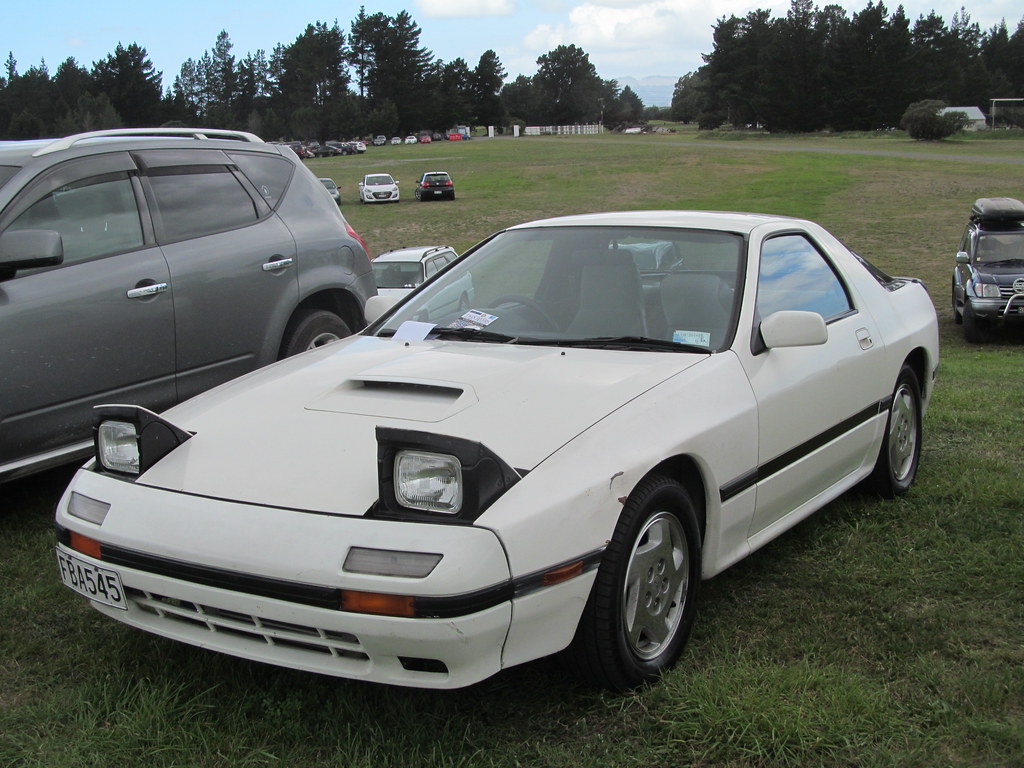
2. **Mazda RX-7**The Mazda RX-7 isn’t just a car; it’s a legend built on a foundation of lightweight balance, incredibly sleek design, and the mesmerizing uniqueness of its rotary engine. This wasn’t a car about brute, pavement-ripping power; it was about precision, feel, and agility, earning deep respect among drivers who prioritized the art of driving over sheer horsepower figures. It was a purist’s delight, a vehicle that connected with its driver on an almost visceral level.
Even years after its final production run in 2002, the RX-7 maintains an incredibly strong collector market and vibrant online communities. These dedicated fans tirelessly celebrate its engineering brilliance and unique driving dynamics, proving that the RX-7’s appeal hasn’t diminished one bit. Enthusiasts’ constant, albeit affectionate, complaints about apex seals are almost a badge of honor, and despite these jokes, the rotary engines are actually simpler to work on than standard pushrod engines.
Mazda’s recent experiments with rotary technology, even in a range-extender capacity, strongly suggest that the idea of the rotary engine is far from forgotten within the company. A full-fledged revival of the RX-7 would be welcomed by a global fanbase that still sees it as the ultimate symbol of pure driving enjoyment. With a concept car unveiled at the Japan Mobility Show in 2023, the rotary engine *is* back—now we just need the full RX-7 package to complete the dream!
Car Model Information: 1989 Mazda RX-7
Name: Mazda RX-7
Caption: 1994 Mazda RX-7 R2 (FD3S)
Manufacturer: Mazda
Aka: Mazda Savanna RX-7 (Japan, 1978–1991),Mazda ɛ̃fini RX-7 (Japan, 1991–1997)
Class: Sports car
Production: 1978–2002,811,634 produced
Assembly: Hiroshima
Platform: Mazda F platform
Layout: Front-engine, rear-wheel-drive layout#Front mid-engine, rear-wheel-drive layout
Predecessor: Mazda RX-3
Successor: Mazda RX-8
Categories: 1980s cars, 1990s cars, 2000s cars, 24 Hours of Le Mans race cars, All Wikipedia articles written in British English
Summary: The Mazda RX-7 is a sports car which was manufactured and marketed by Mazda from 1978 to 2002 across three generations. It has a front mid engine, rear-wheel-drive layout and uses a compact and lightweight Wankel rotary engine.
The first-generation RX-7, codenamed SA (early) and FB (late), is a two-seater coupé with a rear hatchback. It featured a 12A carbureted rotary engine as well as the option for a 13B rotary engine with electronic fuel injection in later years. The second-generation RX-7, carrying the internal model code FC, was offered as a two-seater coupé with a 2+2 option available in some markets, as well as in a convertible body style. This was powered by the 13B rotary engine, offered in naturally aspirated or turbocharged forms. The third-generation RX-7, model code FD, was offered as a two-seater coupé with a 2+2 version offered as an option for the Japanese market. It featured a sequentially turbocharged 13B REW engine.
More than 800,000 RX-7s were manufactured over its lifetime.
Get more information about: Mazda RX-7
Buying a high-performing used car >>>
Brand: Mazda Model: RX-7
Price: $14,998 Mileage: 88,741 mi.
Read more about: Beyond the Hype: Why Savvy Celebrity Collectors Are Investing Big in Vintage Japanese Sports Cars and What It Means for Your Portfolio
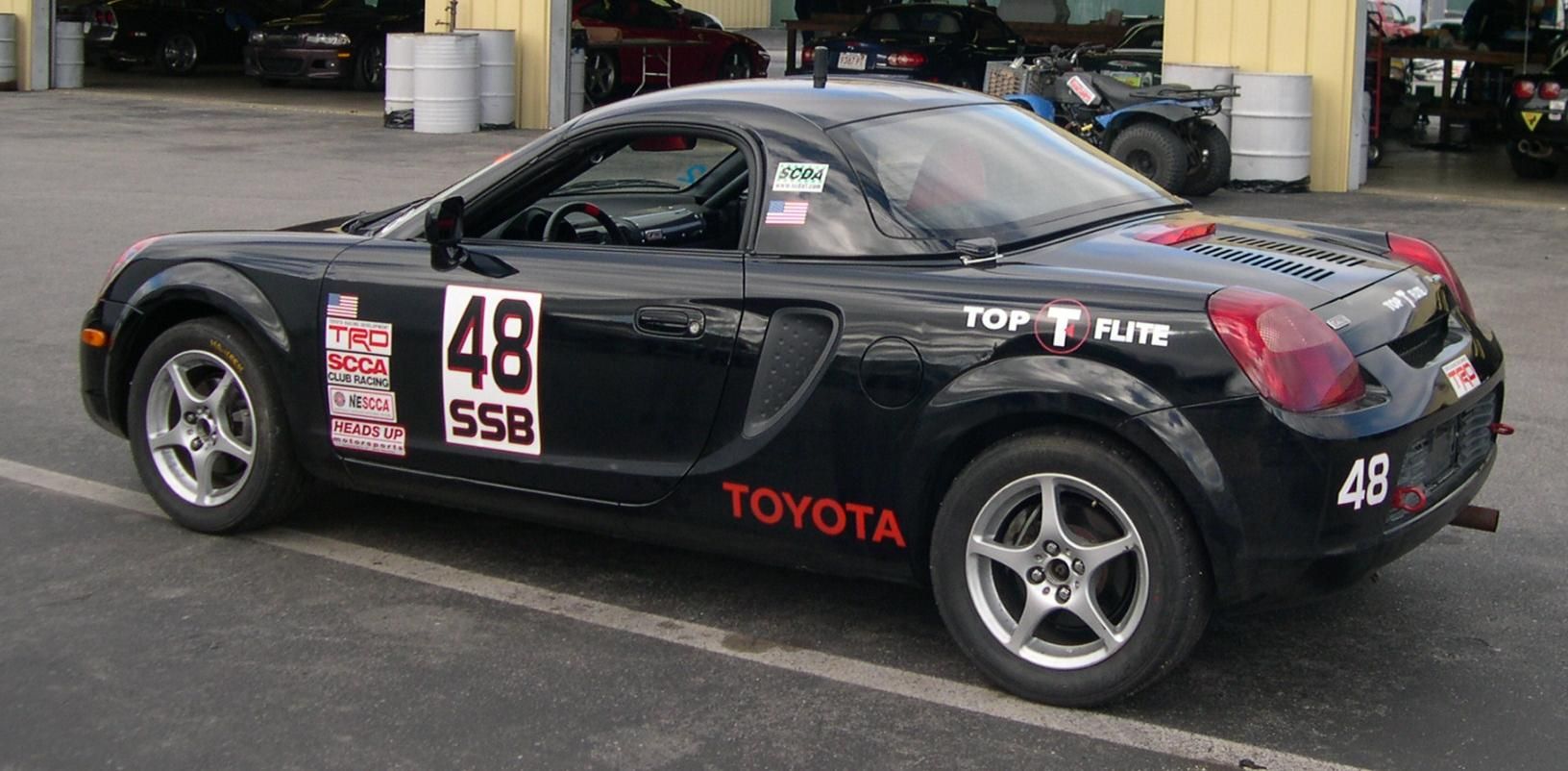
3. **Toyota MR2**The Toyota MR2 was a revelation, an absolute cult favorite that dared to offer a mid-engine layout in a package that was both affordable and incredibly accessible. This wasn’t some exotic supercar out of reach for most; it was a nimble, engaging, and genuinely fun machine that punched well above its weight class. Its sharp handling and distinct personality quickly garnered a devoted following, proving that you didn’t need a massive price tag for an exhilarating driving experience.
Few cars have ever managed to strike such a perfect balance between approachability and technical novelty. The MR2 delivered a true sports car feel without the intimidating complexities or exorbitant costs often associated with mid-engine designs. It remains a fantastic option if you’re seeking something significantly more affordable than a Porsche 911 but still crave that unique dynamic balance.
The MR2’s popularity never truly faded; demand for clean examples remains incredibly steady in the used car market, a testament to its enduring appeal and well-deserved reputation. Bringing it back could brilliantly help fill the void for drivers who are desperately seeking something lightweight, compact, and utterly engaging in a world increasingly dominated by larger, less connected vehicles. It’s time for this agile hero to make a triumphant return.
Car Model Information: 1993 Toyota MR2 Turbo
Name: Toyota MR2
Caption: Second generation MR2
Manufacturer: Central Motors
Aka: Toyota MR (France and Belgium)
Production: 1984–2007
Assembly: Sagamihara, Kanagawa
Class: Sports car
Layout: Rear mid-engine, rear-wheel-drive layout
ModelYears: 1985–2007
Categories: 1990s cars, 2000s cars, All Wikipedia articles written in American English, All articles containing potentially dated statements, All articles needing additional references
Summary: The Toyota MR2 is a two-seater sports car which was manufactured and marketed by Toyota from 1984 until 2007 over three generations. It was the first Japanese rear-mid-engine, rear-wheel-drive production car and was sold around the world. The first generation (W10) was produced from 1984 to 1989, the second generation (W20) from 1989 to 1999, and the third generation (W30) from 1999 to 2007.
Conceived as a small, economical and sporty car, the MR2 features a straight-four engine, transversely mounted in front of the rear axle, four-wheel disc brakes, and fully independent coilover suspension with MacPherson struts on each wheel.
The name MR2 stands for either “mid-ship run-about 2-seater” or “mid-engine, rear-wheel-drive, 2-seater”. In French-speaking markets, the vehicle was renamed Toyota MR because the abbreviation “MR2” sounds like the profanity “merdeux” when spoken in French.
Get more information about: Toyota MR2
Buying a high-performing used car >>>
Brand: Toyota Model: MR2
Price: $21,499 Mileage: 145,631 mi.
Read more about: Engineer’s Nightmare: 14 Classic Models That Define Automotive Repair Challenges in 2025
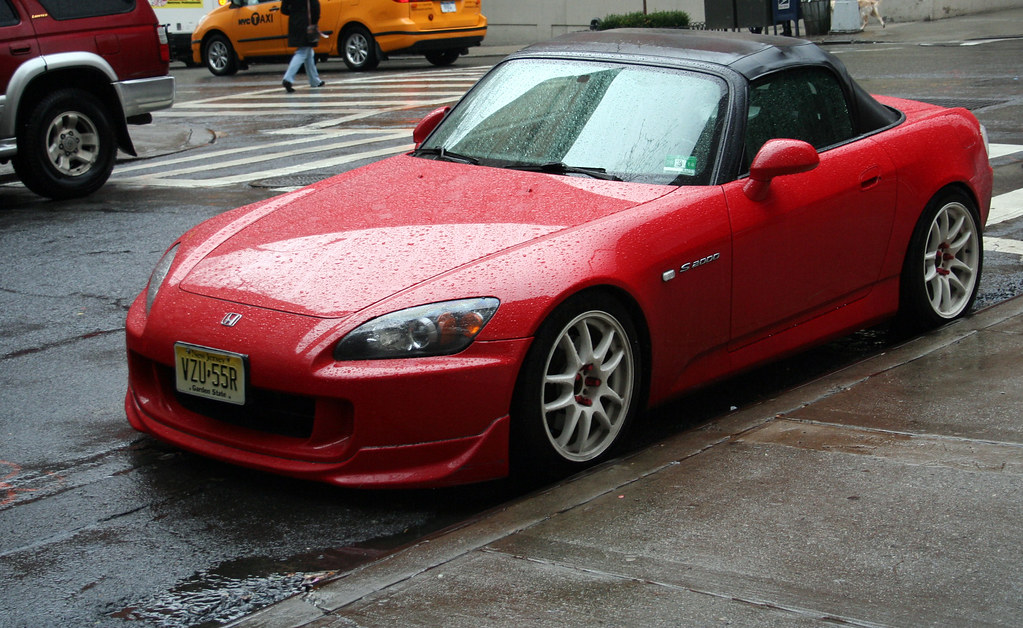
4. **Honda S2000**Oh, the Honda S2000! This car delivered one of the most thrilling open-top experiences of its era, a roadster masterpiece that transcended mere transportation. It was celebrated far beyond the loyal Honda fan base, earning widespread admiration for its legendary high-revving engine and incredibly precise steering. Driving an S2000 wasn’t just driving; it was an event, a symphony of mechanical perfection and pure automotive joy.
In a world where convertibles are becoming an increasingly rare sight, the S2000 is frequently named among the best ever produced, a testament to its timeless design and exhilarating performance. Its legacy has only grown stronger with age, maturing like a fine wine and solidifying its place in the pantheon of great driving machines. This enduring appeal is clearly reflected in its robust resale values, which continue to demonstrate strong demand.
Imagine a modern version of the S2000. Honda’s unparalleled performance expertise, combined with today’s cutting-edge technology, could easily create a contemporary roadster that honors its predecessor’s spirit while pushing boundaries. It’s a chance to bring back an icon that captured the hearts of drivers who craved an intimate, high-performance connection with the open road. We’re ready for that VTEC kick, Honda!
Car Model Information: 2002 Honda S2000 Base
Name: Honda S2000
Manufacturer: Honda
Production: 1999–2009 (110,673 produced)
Class: Sports car
Layout: Front-engine, rear-wheel-drive layout#Front mid-engine, rear-wheel-drive layout
BodyStyle: Roadster (automobile)
Designer: Shigeru Uehara
Caption: 2005 Honda S2000 (AP2)
Predecessor: Honda S800
Categories: 2000s cars, All articles lacking reliable references, Articles lacking reliable references from May 2024, Articles with short description, CS1: unfit URL
Summary: The Honda S2000 is a front-mid engine open top sports car that was manufactured by Japanese automobile manufacturer Honda, from 1999 until 2009. First shown as a concept car called the SSM at the Tokyo Motor Show in 1995, the production version was launched on April 15, 1999, to celebrate the company’s 50th anniversary. The S2000 is named for its engine displacement of two liters, while “S” stood for “sports” carrying on in the tradition of the S500, S600, and S800 roadsters of the 1960s.
Several revisions were made throughout the car’s production life, including changes to the engine, gearbox, suspension, interior and exterior. Officially two variants exist: the initial launch model was given the chassis code AP1; though cosmetically similar, the facelifted version, known as the AP2 in North America and Japan, incorporated significant changes to the drivetrain and suspension. Production of the S2000 ceased on August 19, 2009.
The Honda S2000 was notable for its exceptional specific power output of about 92 kW (124 hp) per liter, or about two horsepower per cubic inch, the highest of any mass production, naturally aspirated car, until 2010.
Get more information about: Honda S2000
Buying a high-performing used car >>>
Brand: Honda Model: S2000
Price: $35,000 Mileage: 24,000 mi.
Read more about: Unmasking the Speed Demons: A Deep Dive into the 13 Car Models Most Often Ticketed in the U.S.
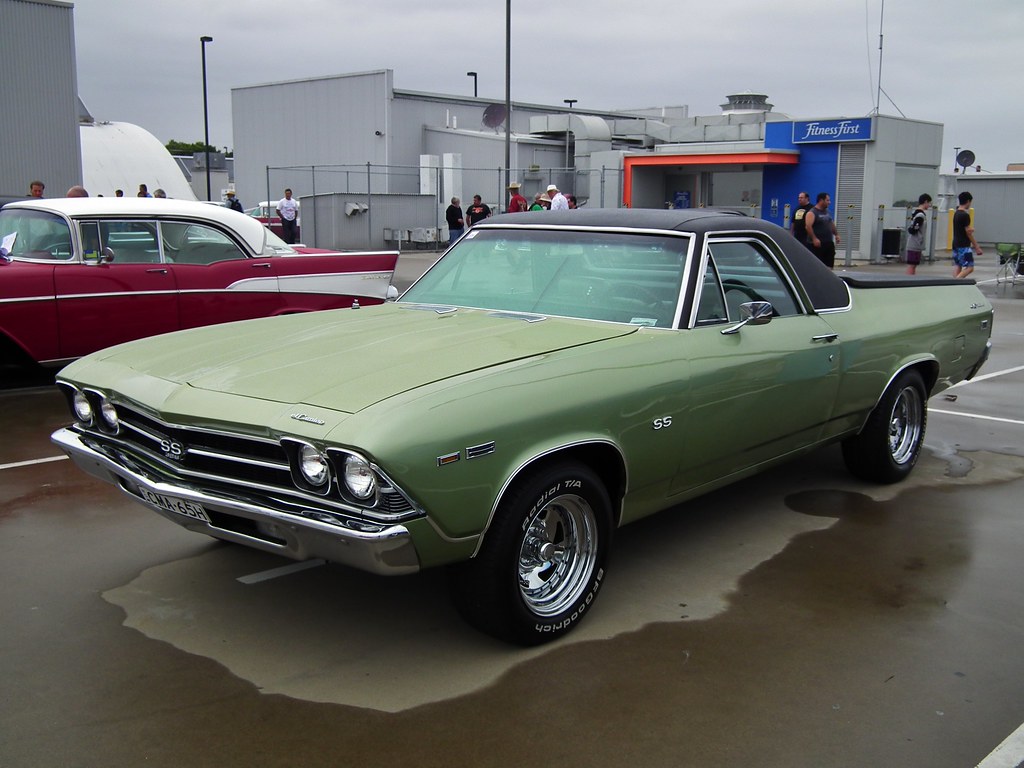
5. **Chevrolet El Camino**The Chevrolet El Camino was a true automotive anomaly, a vehicle that effortlessly defied categorization. It offered impressive utility without ever sacrificing an ounce of style or personality, merging the practicality of a truck with the comfortable, engaging drive of a car. This unique car-truck hybrid nature has only become more appreciated with time, especially as today’s roads are swamped with generic crossover trends that often lack genuine character.
Car lovers regularly clamor for its return, pointing to the distinctive empty space it left in the market that no other vehicle has quite managed to fill. The El Camino went through five generations, starting in 1959 and ending its production run in 1987. The SS model, particularly with its 454 V8 under the hood, has long been a fan favorite, embodying pure American muscle with a surprising twist of practicality.
The idea of a stylish utility vehicle still deeply resonates, especially among drivers seeking function without having to compromise their vehicle’s identity. While a 1995 concept based on the Caprice station wagon was canceled due to the rise of the SUV, a refreshed take on the El Camino today could offer something truly unique and desperately needed in today’s highly segmented market. Bring back the car-truck, Chevy, we dare you!
Car Model Information: 2025 Audi Q7 55 Premium Plus
Name: Chevrolet El Camino
Caption: 1969 El Camino SS
Manufacturer: Chevrolet
ModelYears: 1959–1960 ,1964–1987
Layout: Front-engine, rear-wheel-drive layout,rear-wheel drive
Class: Coupé utility,Muscle car
Categories: 1960s cars, 1970s cars, 1980s cars, All articles lacking reliable references, All articles needing additional references
Summary: The Chevrolet El Camino is a coupé utility vehicle that was produced by Chevrolet between 1959–1960 and 1964–1987. Unlike a standard pickup truck, the El Camino was adapted from the standard two-door Chevrolet station wagon platform and integrated the cab and cargo bed into the body.
Introduced in the 1959 model year in response to the success of the Ford Ranchero coupé utility, its first run, based on the Biscayne’s B-body, lasted only two years. Production resumed for the 1964–1977 model years based on the Chevelle platform, and continued for the 1978–1987 model years based on the GM G-body platform.
Although based on corresponding General Motors car lines, the vehicle is classified in the United States as a pickup. GMC’s badge engineered El Camino variant, the Sprint, was introduced for the 1971 model year. Renamed Caballero in 1978, it was also produced through the 1987 model year.
Get more information about: Chevrolet El Camino
Buying a high-performing used car >>>
Brand: Chevrolet Model: El Camino
Price: $55,675 Mileage: 20,490 mi.
Read more about: Why Classic Car Values Are Exploding: Unpacking the Market Surge and 14 Iconic Models Skyrocketing in Price

6. **Volkswagen Scirocco**The Volkswagen Scirocco was a masterclass in blending European flair with everyday usability, all wrapped up in a package that looked and felt genuinely special. It was sporty, sophisticated, and offered a driving experience that elevated daily commutes. Across multiple generations, the Scirocco earned a loyal audience who appreciated its distinctive charm without it ever becoming overly common or losing its unique appeal.
While not widely available in all markets during its final run, particularly the third generation from 2008 to 2017, it made a lasting impression wherever it landed. Its production, which spanned from 1974 through 1992 for the first two generations, showcased a consistent commitment to a sporty yet practical two-door hatchback design, similar to the Golf but with a much sleeker profile.
In an era where genuinely sporty hatchbacks are becoming increasingly rare, the Scirocco’s return could brilliantly reintroduce much-needed personality to the compact segment. Volkswagen undoubtedly possesses the design language and advanced engineering tools to bring it back with significant impact, creating a modern icon that pays homage to its stylish past. We’re ready for a new chapter of this sleek, front-wheel-drive coupé!
Read more about: Gear Up for Goodbye: 7 Beloved Models Waving Farewell to Manual Transmissions in 2025
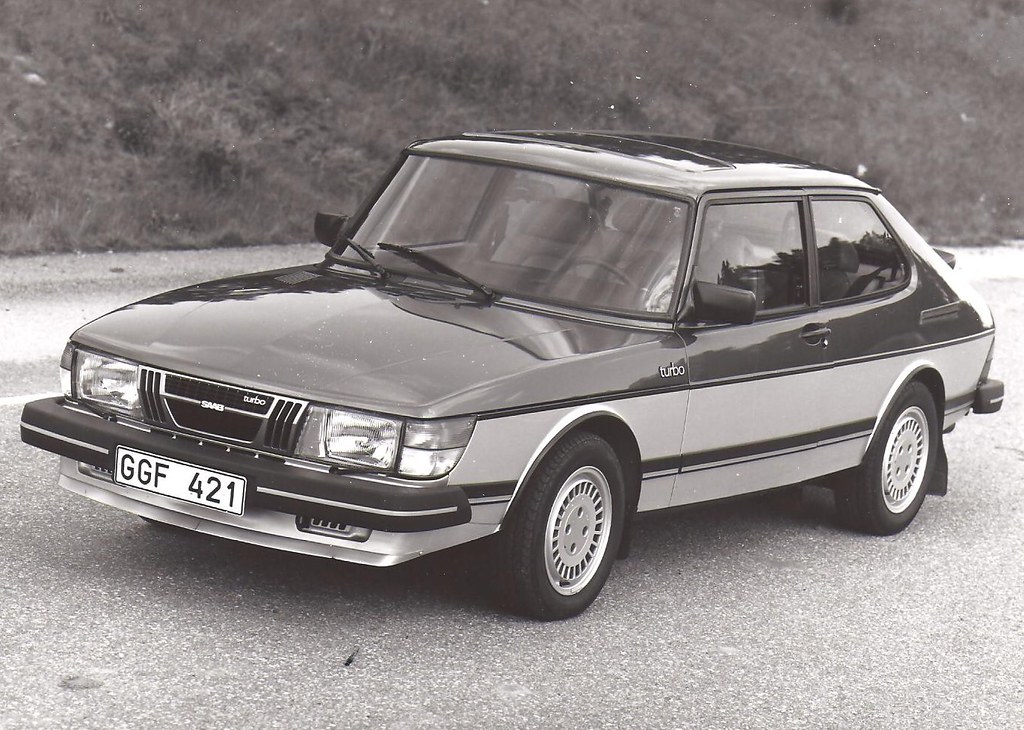
7. **Saab 900 Turbo**Ah, the Saab 900 Turbo. This car was truly in a league of its own, standing apart for its wonderfully unconventional engineering and a distinctive character that was undeniably unique. It wasn’t about following trends; it attracted drivers who valued intelligent design, paramount safety, and a subtle yet potent touch of performance. The 900 Turbo appealed to those who thought differently, to people who wanted a car that reflected their individuality.
The unfortunate closure of the Saab brand left a void in the automotive world that, to this day, has never quite been filled by any other manufacturer. There’s a certain intellectual charm and quirky robustness that was intrinsic to Saab, and the 900 Turbo exemplified this perfectly. It was a car that felt engineered, not just assembled, offering a unique blend of practicality and surprising thrills.
Even now, car enthusiasts restore and collect these cars with remarkable dedication, pouring passion into keeping these unique machines on the road. A comeback under modern leadership could brilliantly revive this loyal niche, providing a much-missed blend of practicality, safety, and undeniable individuality. The world could certainly use a dose of that distinct Saab thinking again!
Continuing our plea for automotive comebacks with seven more unforgettable models, including rally-bred machines, understated performance sleepers, and stylish practical powerhouses, detailing their lasting impact and potential for modern revival.
Read more about: More Than Just Metal: 10 Quirky Hatchbacks That Sparked Love or Frustration in Their Owners
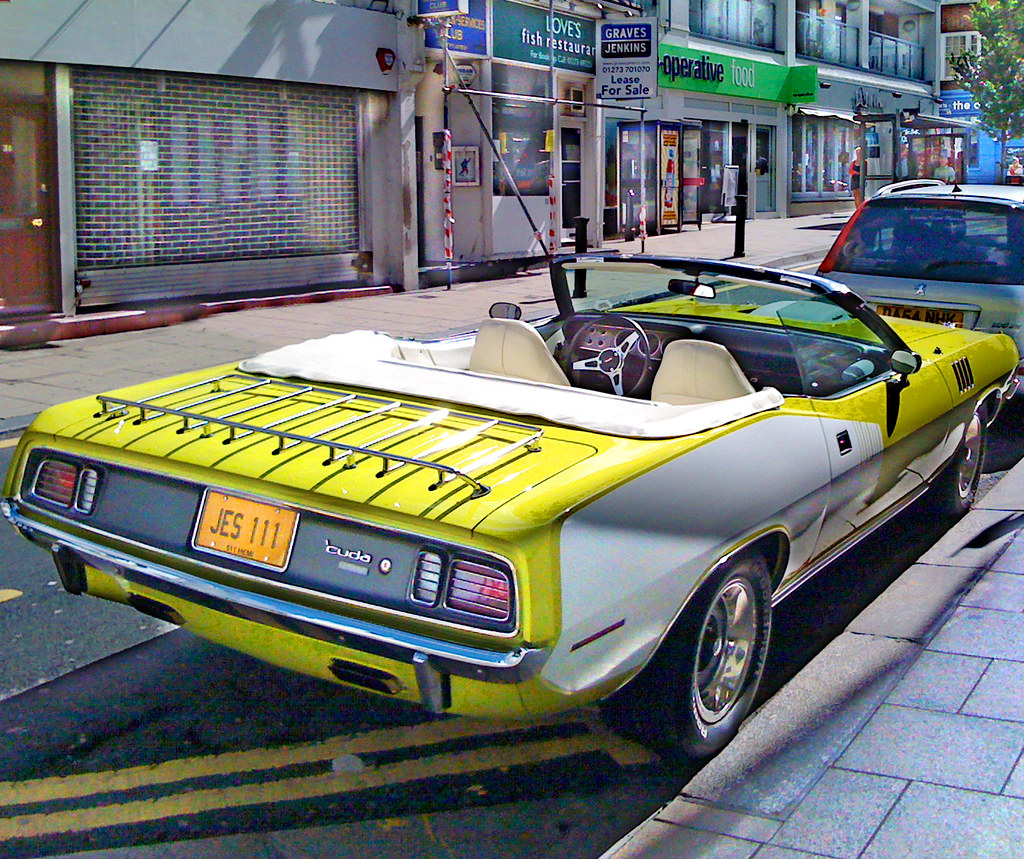
8. **Plymouth Barracuda**Oooooooh, Barracuda! That classic song instantly pops into your head, right? This car wasn’t just a vehicle; it was a front-runner, helping to define American performance before the muscle car craze exploded. With its bold identity and sharp design, it had raw capability, evolving beautifully through each generation.
The Barracuda might have sometimes found itself overshadowed by flashier rivals, but it carved out its own unique legacy. Its racing roots and unmistakable presence gave it a character few others could match. This car always had something to prove, and it delivered!
Even though it’s been gone, its absence has only made our hearts grow fonder! Interest has exploded, especially within the passionate MOPAR community worldwide. Imagine a modern ‘Cuda roaring back onto the scene – honoring its heritage while offering a fresh take on an American coupe. We’re ready for that legendary comeback!
Car Model Information: 1969 Plymouth Barracuda ‘CUDA
Caption: 1970 Hardtop Coupe
Name: Plymouth Barracuda
Manufacturer: Plymouth (automobile)
Production: 1964–1974
Assembly: Fenton, Missouri,Hamtramck, Michigan,Maywood, California,Windsor, Ontario
Layout: Front-engine, rear-wheel drive layout
Class: Pony car
Categories: 1970s cars, All articles with dead external links, All articles with unsourced statements, Articles with dead external links from February 2018, Articles with dead external links from January 2022
Summary: The Plymouth Barracuda is a two-door pony car that was manufactured by Chrysler Corporation from 1964 through 1974 model years.
The first-generation Barracuda was based on the Chrysler A-body and was offered from 1964 until 1966. A two-door hardtop (no B-pillar) fastback design, it shared a great majority of parts and bodywork with the Plymouth Valiant, except for the distinctive wraparound rear glass.
The second-generation Barracuda, though still Valiant-based, was heavily redesigned. Built from 1967 through 1969, it was available as a two-door in fastback, notchback, and convertible versions.
The third generation, offered from 1970 until 1974, was based on the Chrysler E-body, exclusive to it, and the slightly larger Dodge Challenger. A completely new design, the two-door Barracuda was available in hardtop and convertible body styles.
Get more information about: Plymouth Barracuda
Buying a high-performing used car >>>
Brand: Plymouth Model: Barracuda
Price: $142,965 Mileage: 3,152 mi.
Read more about: Gearhead God: A High-Octane Tour Through John Cena’s Legendary American Muscle Car Empire
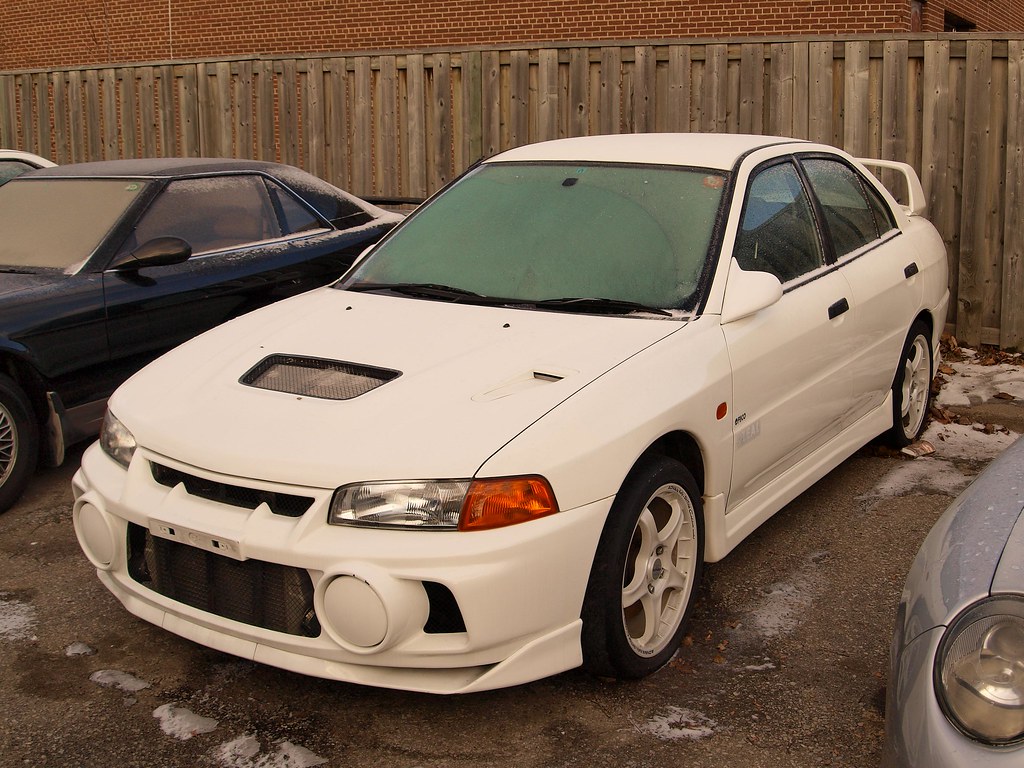
9. **Mitsubishi Lancer Evolution**If you’re a fan of cars that blur the line between a daily driver and a rally champion, the Mitsubishi Lancer Evolution is high on your wish list! This wasn’t just a compact sedan; it was a pure performance machine, perfectly filtered through daily drivability. The Evo redefined what was possible with all-wheel drive and rally-inspired engineering.
For ten generations, the Evo was the ultimate challenger, sparking an epic rivalry with Subaru’s Impreza-based WRX. With its distinctive big wing and rally-minded design, it was the STI’s biggest competition. Its departure left a gaping hole in Mitsubishi’s lineup that no other model has truly filled.
Despite Mitsubishi’s shift towards eco-friendly products, the yearning for the Evo is stronger than ever. The passionate fanbase is incredibly active, supporting used models—often at a premium! A revival would bring huge relevance to the brand. Imagine a new Evo tearing up the tarmac – car fanatics, start your engines!
Car Model Information: 2025 Audi Q7 55 Premium Plus
Name: Mitsubishi Lancer Evolution
Caption: Mitsubishi Lancer Evolution X
Manufacturer: Mitsubishi Motors
Production: 1992–2016
BodyStyle: sedan (car),station wagon
Assembly: Japan:,{{blist,Okazaki, Aichi,Kurashiki, Okayama
Class: Sport compact car
Layout: Front-engine, four-wheel-drive
Engine: Straight-four engine,Mitsubishi Sirius engine#4G63,Mitsubishi 4B1 engine#4B11T
Transmission: Twin Clutch SST,5-speed automatic (2002, 2006–2007),manual transmission,6-speed manual (2003–2008)
Predecessor: Mitsubishi Galant VR-4
Related: Mitsubishi Lancer,Mitsubishi Lancer WRC,Mitsubishi Racing Lancer
Categories: 2000s cars, 2010s cars, All-wheel-drive vehicles, All Wikipedia articles in need of updating, All Wikipedia articles that are incomprehensible
Summary: The Mitsubishi Lancer Evolution, popularly referred to as the “Evo”, is a sports sedan and rally car based on the Lancer that was manufactured by Japanese manufacturer Mitsubishi Motors from 1992 until 2016. There have been ten official versions to date, and the designation of each model is most commonly a Roman numeral. All generations use two-litre intercooled turbo inline four-cylinder engines and all-wheel drive systems.
The Lancer was originally intended only for Japanese markets, but demand on the “grey import” market led the Evolution series to be offered through Ralliart dealer networks in the United Kingdom and in various European markets from around 1998. Mitsubishi decided to export the eighth generation Evolution to the United States in 2003 after witnessing the success Subaru had in that market the previous year with the Subaru Impreza WRX.
All domestic-market versions, until the release of the Evolution IX in 2005, were limited by a gentlemen’s agreement between Japanese car manufacturers to advertise no more than 280 PS (206 kW; 276 hp). However, sources say Mitsubishi had already been producing cars with more power but had been underrating the official power outputs in order to comply with the agreement. Therefore, each subsequent version has unofficially evolved above the advertised power figures, with the Japanese-market Evolution IX reaching an alleged output of around 320 PS (235 kW; 316 hp). Various special versions available in other markets, particularly the UK, have official power outputs up to 446 PS (328 kW; 440 hp).
The tenth and final generation of the Lancer Evolution, the Evolution X, was launched in Japan in 2007, and overseas markets in 2008. The Evolution X was produced for almost 10 years until Mitsubishi retired the Lancer Evolution in April 2016.
Get more information about: Mitsubishi Lancer Evolution
Buying a high-performing used car >>>
Brand: Mitsubishi Model: Lancer Evolution
Price: $55,675 Mileage: 20,490 mi.
Read more about: Navigating the Compact Car Market: Your Essential Guide to 11 Top Affordable Picks for Smart Buyers

10. **Nissan Silvia (S15)**Oh, the Nissan Silvia S15 – a car that just screams “cool”! Sleek, sharp, and built for driving precision, it became an instant icon. It quickly became a favorite among tuners and drifters, carving out a legendary status for its sublime balance and thrilling rear-wheel-drive dynamics.
Its allure wasn’t just raw performance; it was also its understated confidence. This car spoke volumes to purists who appreciated its pure driving dynamics, making it a nuanced choice. Limited access to this model in key markets only fueled its mystique and deepened its mythical appeal.
Even today, the Silvia’s legacy influences car culture, from video games to motorsport. Its timeless design and driver-focused engineering make it truly missed. Imagine a modern S15, blending iconic rear-wheel-drive fun with modern safety and technology. Talk about capturing a wide spectrum of buyers – it would be an instant hit!
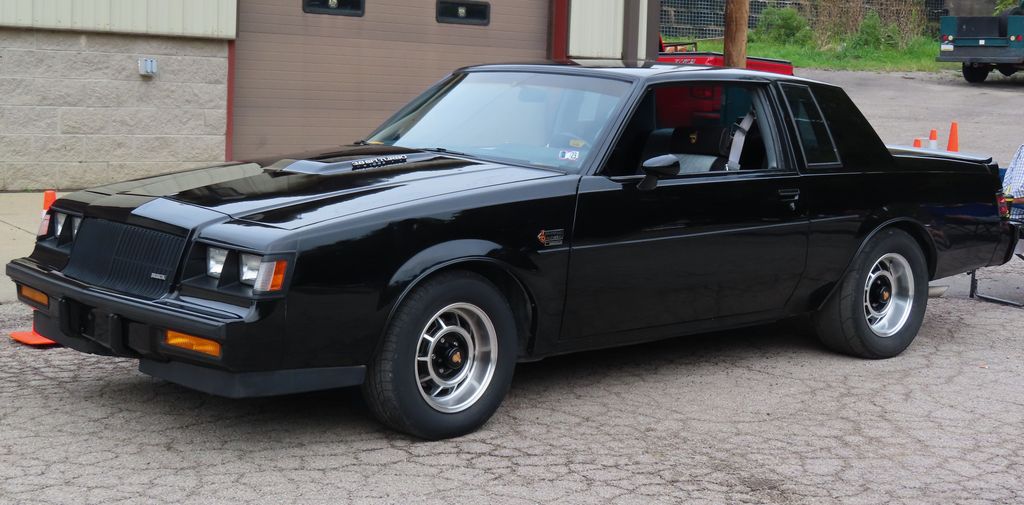
11. **Buick GNX**Let’s talk about a true wolf in sheep’s clothing: the Buick GNX. This car didn’t shout with flashy designs; it arrived with quiet, unassuming looks that turned the full-size sedan formula on its head. Underneath, serious potent performance delivered power and attitude, surprising anyone who underestimated it.
It wasn’t about being loud; it was about being incredibly effective. The GNX stood out not with overt flash, but with raw power and an undeniable attitude hidden expertly behind its modest appearance. This unique blend of stealth and brute force earned it a fiercely loyal following that continues to grow today.
Buick’s current lineup could seriously use a performance halo car to redefine its image. A thoughtful reintroduction of the GNX could modernize that legendary performance while staying true to its original, restrained confidence. This isn’t just a comeback; it’s a chance for Buick to reclaim its edgy side, and honestly, we’re here for it!
Read more about: From Street Queens to Garage Dreams: 14 Everyday ’80s Cars Now Prized Collector Favorites
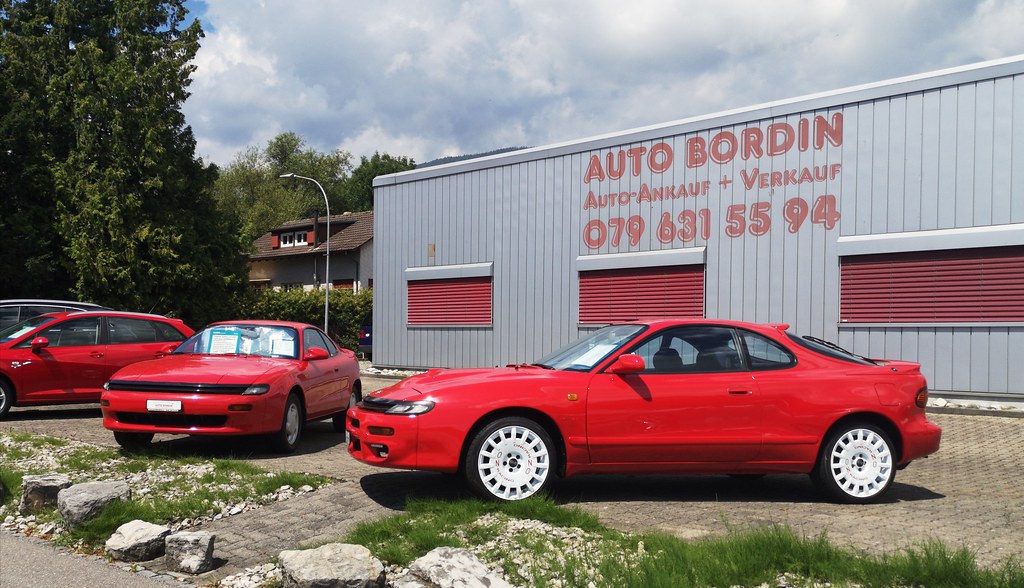
12. **Toyota Celica GT-Four**If you crave rally-bred performance you could actually drive every day, the Toyota Celica GT-Four should be ringing all your bells! This car was an absolute marvel, bringing cutting-edge rally technology straight to the street. With all-wheel drive and turbocharged power, it was a street-legal beast that could go toe-to-toe with the world’s best.
The GT-Four was more than just a fast car; it was a symbol of Toyota’s prowess in motorsport. Its name became synonymous with real-world success on the rally stages, making it a standout in Toyota’s rich history. It carried motorsport credibility that few other road cars could claim, blending track thrill with daily drivability.
It’s no surprise that whenever enthusiasts dream about cars that deserve another chance, the Celica GT-Four always comes up. Imagine a modern GT-Four, tapping into Toyota’s renewed interest in performance. They wouldn’t even need to reinvent the wheel; just bring back a legend that’s proven its worth! We’re ready for that next chapter of rally-inspired excitement.
Car Model Information: 2025 Audi Q7 55 Premium Plus
Name: Toyota Celica GT-Four
Caption: Toyota Celica GT-Four All-Trac Turbo (ST185, US)
Manufacturer: Toyota
Aka: ubl
Production: October 1986 – June 1999
ModelYears: 1986 – 1999
Assembly: Tahara, Aichi
Class: ubl
BodyStyle: liftback,coupé
Layout: Front-engine, four-wheel-drive layout
Related: Toyota Celica
Categories: 1980s cars, 1990s cars, All-wheel-drive vehicles, Articles with hAudio microformats, Articles with short description
Summary: The Toyota Celica GT-Four is a high performance model of the Celica Liftback that was produced from 1986 to 1999, with a turbocharged 3S-GTE engine, and full-time AWD. It was created to compete in the World Rally Championship, whose regulations dictate that a manufacturer must build road-going versions of the vehicle in sufficient numbers. These vehicles are referred to as “homologation special vehicles”.
The Celica GT-Four came in three generations; the ST165, based on the fourth generation Celica, and manufactured between October 1986 and August 1989; the “super round” shape ST185 produced from September 1989 to September 1993; and the ST205, built from February 1994 to June 1999.
The Celica GT-Four production cars were built at Toyota’s Tahara plant in Aichi Prefecture, Japan, and the rally cars were prepared by Toyota Team Europe in Cologne, Germany.
The Celica GT-Four ST165 made its World Rally Championship (WRC) debut in the 1988 Tour de Corse, with its first WRC victory coming in the 1989 Rally Australia. The ST185’s WRC debut was in the 1992 Rally Monte Carlo, and its first WRC win was in the 1992 Safari Rally, which was one of its four victories in that year. The ST185 was Toyota’s most successful rally car for more than two decades until this position was taken by Toyota Yaris WRC, and now the GR Yaris Rally1. The Celica ST185 won the WRC Drivers’ Championship in 1992, and the WRC Manufacturers’ and Drivers’ championships in 1993 and 1994. The ST205 came in late 1994, and became the official rally car in 1995 with one WRC victory before disqualification. It also won the 1996 European Rally Championship.
The significance of the Toyota Celica GT-Four in WRC history, previously dominated by European manufacturers, is that it was the first time a Japanese car manufacturer entered the WRC with an AWD turbocharged car, took trophies and won the titles. Since then other Japanese manufacturers have been successful in the WRC. Toyota preceded the Mitsubishi (Lancer Evolution and Galant VR-4) and the Subaru (Legacy and Impreza), but not the Mazda (Mazda 323GT-R & 323GT-X). Toyota later exited the WRC to concentrate their racing efforts in Formula One, but in 2017, 11 years after the Celica was discontinued, Toyota returned to WRC with the Toyota Yaris.
Toyota Team Europe (TTE) was also the first to introduce the anti-lag system (ALS) in their Group A ST205 Celica GT-Four rally cars, a technological breakthrough that was later adopted by other teams.
Get more information about: Toyota Celica GT-Four
Buying a high-performing used car >>>
Brand: Toyota Model: Celica GT-Four
Price: $55,675 Mileage: 20,490 mi.
Read more about: Beyond the Hype: Why Savvy Celebrity Collectors Are Investing Big in Vintage Japanese Sports Cars and What It Means for Your Portfolio
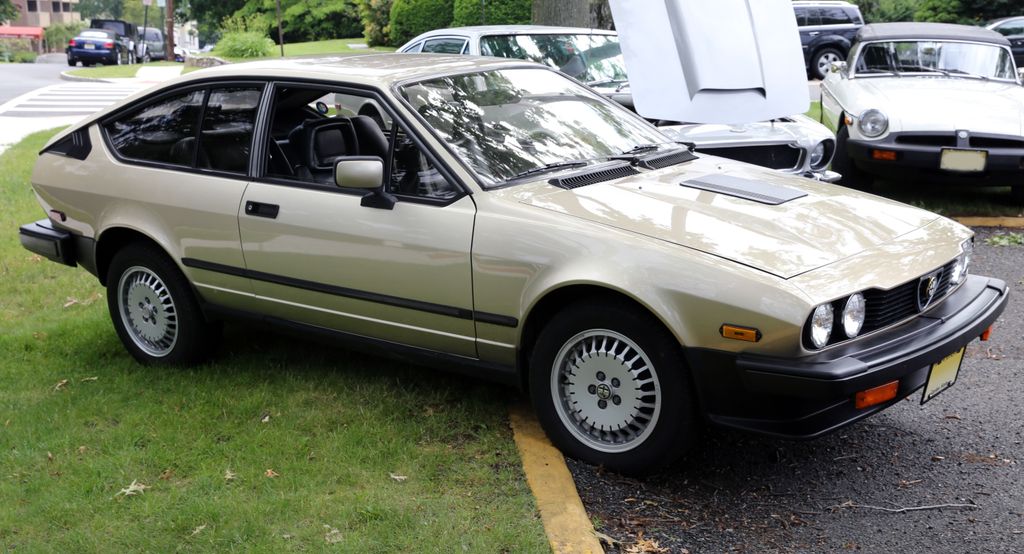
13. **Alfa Romeo GTV**Ah, the Alfa Romeo GTV. Just hearing the name conjures images of winding Italian roads, passionate driving, and stunning design. This car was a masterpiece, embodying Italian style in a package that balanced comfort, exhilarating performance, and pure automotive soul. It wasn’t just transportation; it was an experience, a work of art on wheels.
The GTV wasn’t for everyone, and that was precisely its charm. It catered to drivers who valued flair, elegance, and an emotional connection to their machine as much as raw function. Despite limited numbers, it left an incredibly strong impression on everyone lucky enough to own or admire one.
As Alfa Romeo rebuilds its global presence, a modern GTV could be a game-changer. This name profoundly deserves more time in the spotlight, offering a unique blend of rich history and inspiring aspiration that few other badges can match. It’s time to let that Italian passion ignite again with a GTV revival!
Car Model Information: 2025 Audi Q7 55 Premium Plus
Name: Alfa Romeo GTV,Alfa Romeo Spider
Caption: Alfa Romeo GTV 2.0 V6 TB
Manufacturer: Alfa Romeo
Production: 1993–2004 (Spider),1994–2004 (GTV)
ModelYears: 1995–2004
Assembly: Arese,San Giorgio Canavese
Designer: Enrico Fumia,Walter de Silva,Pininfarina
Class: Sports car
Platform: Fiat Tipo Due platform
BodyStyle: 2+2 (car body style),Roadster (automobile)
Layout: Front-engine, front-wheel-drive layout
Engine: Alfa Romeo Twin Spark engine,2.0 L Twin Spark 16V I4,JTS engine,Alfa Romeo V6 engine,3.0 L Alfa Romeo 12V V6,3.0 L–3.2 L Alfa Romeo 24V V6
Transmission: Manual transmission
Wheelbase: 2540 mm
Abbr: on (Spider)
Length: 4285 mm
Width: 1780 mm
Height: 1318 mm
Weight: convert
Predecessor: Alfa Romeo Alfetta#GT,Alfa Romeo Spider
Successor: Alfa Romeo Brera and Spider
Sp: uk
Related: Fiat Coupé,Alfa Romeo Vola
Categories: 2000s cars, Alfa Romeo vehicles, All articles needing additional references, All articles with unsourced statements, Articles containing explicitly cited English-language text
Summary: The Alfa Romeo GTV and the Alfa Romeo Spider (Type 916) are sports cars produced by the Italian automobile manufacturer Alfa Romeo from 1993 to 2004. The GTV is a 2+2 coupé, while the Spider is a two-seater roadster. Production totaled 38,891 units for the Spider and 42,937 units for the GTV.
The GTV’s name (Gran Turismo Veloce–English: Fast Grand Touring) placed it as the successor to the long-discontinued Alfetta GTV coupé, whereas the Spider was effectively the replacement for the then 30-year-old 105-series Giulia Spider. The GTV was available until the launch of the Brera in 2005, while the Spider lasted another year until the launch of its Brera-based successor in 2006.
The Alfa Romeo GTV was described as “one of the best sports cars of its time” by motoring journalist Jeremy Clarkson in 1998 and was listed at number 29 in Top 100 Cars in 2001.
Get more information about: Alfa Romeo GTV and Spider
Buying a high-performing used car >>>
Brand: Alfa Romeo Model: GTV
Price: $55,675 Mileage: 20,490 mi.
Read more about: Critical Stellantis Recall: Comprehensive Breakdown of 72,000 UK Vehicles Facing Engine Fire Risk
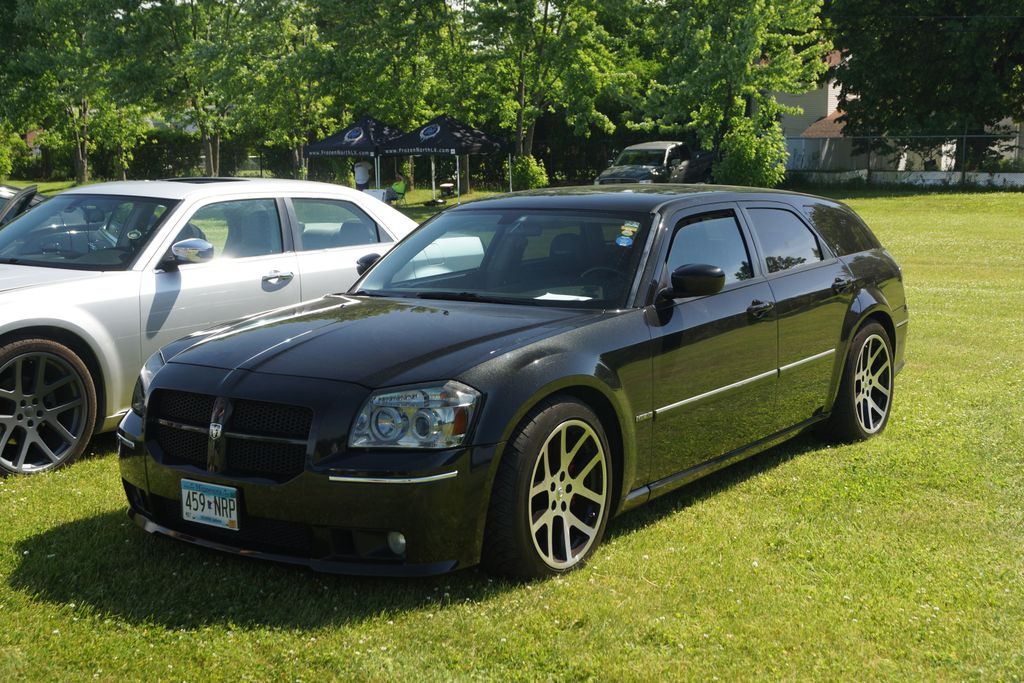
14. **Dodge Magnum**Okay, let’s hear it for the Dodge Magnum – a car that dared to be different! This was the ultimate blend, bringing serious muscle car attitude right into a practical wagon body. It offered incredible space and utility without sacrificing its bold, unapologetic identity. It was a rebel with a cause, and it truly took car lovers by storm.
It was famously revived in 2004 as a full-size, V-8-powered, rear-drive station wagon built on the Chrysler LX platform. It carved out a unique space in the market that few vehicles have attempted to fill since. Petrolheads adored its fantastic blend of genuine utility, bold styling, and thrilling real-world performance.
Today’s buyers are more open to unconventional formats, making the idea of a high-performance wagon incredibly relevant and needed. A return of the Dodge Magnum could help redefine what “utility” actually means in the modern American garage. Who says practicality can’t be unbelievably cool and powerful? Bring back the Magnum, Dodge – we’re ready to haul with horsepower!
Still Parked in Our Minds
Okay, so we’ve just cruised through some of the most iconic vehicles still revving in our minds! From rally legends to sleek sleepers and practical powerhouses, these cars left an indelible mark on automotive history and our hearts. Each one proved that certain designs, performances, and feelings are truly timeless. The good news? You can still find many of these beauties used, and with the rise of “resto-mods,” older cars get dazzling upgrades with new tech, making them exciting to drive today. Automakers dipping their toes into bringing back models? We’re all for it! There’s magic in blending classic charm with modern innovation.
Car Model Information: 1998 Dodge Dakota Base
Name: Dodge Magnum
Caption: 2008 Dodge Magnum SE, Stone White
Production: 1978–1979, 1979–1981,1981–1988, 2005–2008,
ModelYears: 1978–1979,1979–1981,1981–1988,2005–2008
Manufacturer: Chrysler Corporation
Categories: 1980s cars, 2000s cars, All articles with unsourced statements, Articles with short description, Articles with unsourced statements from August 2025
Summary: The Dodge Magnum is a nameplate used by several Dodge vehicles, at different times and on various markets. The name was first applied to a large Chrysler B platform-based 2-door coupe marketed from 1978 to 1979 sold in the United States and Canada. From the 2005 to the 2008 model years, the nameplate was revived for a Charger-based station wagon on the rear-wheel drive Chrysler LX platform, produced in Canada and sold on the American and Canadian market.
In Brazil, the Magnum was a top-of-the-line version of the local Dodge Dart, produced from 1979 to 1981.
In Mexico, the Dodge Magnum was a sporty rear-wheel drive two-door car based on Chrysler’s M-body (American Dodge Diplomat/Plymouth Gran Fury). From 1983 to 1988 Dodge marketed a sporty two-door K-car as the “Magnum”, with an available turbocharger engine from 1984 on.
Get more information about: Dodge Magnum
Buying a high-performing used car >>>
Brand: Dodge Model: Magnum
Price: $12,625 Mileage: 54,263 mi.
Read more about: Revving Through Time: The 16 Muscle Cars That Defined the 60s and 70s with Unforgettable Power and Style
These twelve legends prove some legacies are too powerful to stay parked, too important to be forgotten. They are a testament to what happens when designers and engineers truly push boundaries, creating vehicles that transcend their era. So, what about you? Which automotive icon are YOU desperately hoping to see roar back into production? Drop your dream car in the comments below – let’s keep this conversation going and manifest those epic comebacks!

